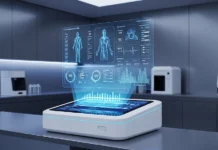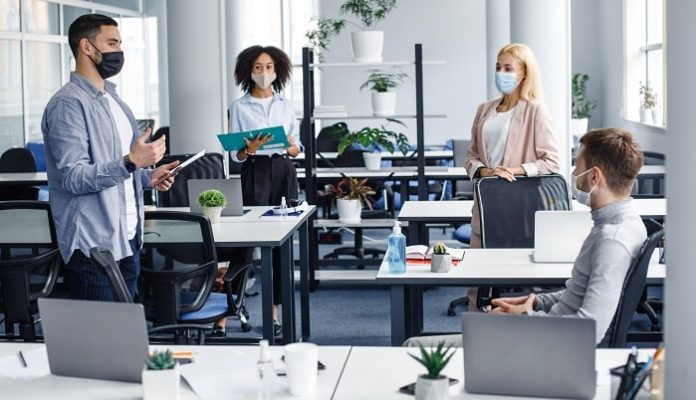Working Face-To-Face During The Pandemic
It’s been a year since the COVID-19 pandemic broke out. But thanks to the tireless efforts of medical front liners and researchers, the vaccine to combat the virus is beginning to roll out. As a result, countries worldwide are beginning to open their doors for travel to jumpstart the economy once again. Consequently, companies are taking advantage of this by encouraging their employees to start reporting back to the office.
But the likelihood of coming back to work may pose health risks and questions to a company’s workforce. If you’re wondering whether it’s safe to report back to the office, read on to learn more about things you should remember before coming back to in-person work.
Is It Safe To Report To Work
The first question you may be thinking of is, ‘how safe is it to go back to face-to-face work?’
There is no guarantee that it will be safe to be out in public or the workplace. And with the possibility of a new strain, COVID-19 continues to rage on. Therefore, one cannot be too sure about health and safety because the common enemy remains unpredicted.
But the good news is, following basic health protocols and proper hygiene is still one of the best ways to keep yourself safe even when your boss asks you to report to work. In fact, putting these health practices to work can be another method for health experts to measure how effective these protocols indeed are.
How To Keep Yourself Safe
Safety. That’s the most critical aspect companies and employees should consider when they begin to roll out new policies regarding going back to work. Since not everyone has received proper vaccinations yet, don’t expect everything to return to business as usual.
It’s extremely important for employers to make an effort to provide safety guidelines for their workforce to follow. If you’re a business owner, some of the essential health protocols you should include are as follows:
- Always Wear A Mask
- Practice Physical Distancing
- Disinfect Your Hands Frequently
- Practice Proper Hygiene
- Traveling Safely
- Clean And Sanitize High-Touch Surfaces And Objects
- Stay At Home When Necessary
- Familiarize Yourself With COVID-19 Symptoms
For employees, follow these protocols to ensure your and others’ safety in the workplace.
Always Wear A Mask
Whether you’re out in public or in the office, it’s crucial to wear a face mask or covering. Wearing a mask helps prevent respiratory droplets from coming out or going into your system. These droplets can be deadly, especially when they carry coronavirus that causes COVID-19 symptoms. So, to prevent transmission of the virus, wear a mask religiously before going outside the house.
In terms of types, there’s a variety of face masks available in the market. Here are four of the most commonly known in the market:
- N95 Masks—these are professional-grade medical masks that form a tight covering for your mouth and nose when used. If you’re not familiar with N95 masks, these usually come with a rounded shape; sometimes, they may even look like a duckbill, which can be confusing to wear. Here’s a quick guide on how to wear a duckbill mask
- Cloth Masks—these are washable and reusable masks that contain several layers of fabric that act as a protection from respiratory droplets you may breathe out. You can buy cloth masks almost anywhere online these days. Or you can easily sew one up yourself. Just make sure that the mask covers your mouth and nose and fits snugly against the side of your face, leaving no gaps.
- Surgical Masks—these are disposable masks typically worn by medical professionals for single-use during a medical procedure. Wearing surgical masks can be very useful in protecting users from large respiratory droplets that may contain coronavirus. Health experts recommend that non-medical workers skip buying surgical masks and reserve them for front liners to use.
- Face Shield—face shield is a face covering that comes with a thin sheet of clear plastic that protects your face from your forehead down to your chin. Wearing a face shield provides an additional layer of protection against respiratory droplets that may enter your system through your eyes. However, a face shield is used only to supplement face masks, not a replacement.
As you can see, wearing protective equipment such as a face mask not only protects you from coronavirus but also prevents others from acquiring COVID-19 symptoms in case you may be infected.
Practice Physical Distancing
A person with COVID-19 could easily transmit the virus through close contact. As you report back to work, maintain a distance of 6 feet between you and your co-workers. Skip the hugs, pats on the back, and close chatter by the cooler. Doing so can help make your work environment a safe place, especially for individuals with increased risk for severe illness.
It’s also important to keep in mind that microparticles of COVID-19 can spread through the air. Compared to outdoor places, indoor spaces with minimal ventilation, like an office, could pose more risk in acquiring the virus. Combining the protection of maintaining social distance and wearing a face mask is one of the best ways to protect yourself and others from coronavirus.
Disinfect Your Hands Frequently
To complete the trifecta for the best health practice to fight off COVID-19, disinfect your hands as often as you can. Frequently wash your hands with soap and water for 20 seconds. Believe it or not, your hands are the part of your body most exposed to respiratory droplets carrying the virus. Make it a habit to wash your hands first before you eat, touch your face, eyes, and mouth.
If you’re outside and have no access to a sink, you can disinfect your hands using a hand sanitizer. Carry a bottle of hand sanitizer containing at least 60% alcohol wherever you go. Once you develop this habit, you’re not only protecting yourself but also others.
Practice Proper Hygiene
Proper personal hygiene can go a long way in terms of keeping yourself and others safe from coronavirus. Whether you’re infected or not, cover your mouth and nose whenever you cough or sneeze. Use a piece of tissue or the inside of your elbow when sneezing or coughing to avoid breathing out respiratory droplets directly on your hands. Throw used tissues right away, and make sure to wash your hands with soap and water.
Traveling Safely
Besides being inside a closed office space, transportation could also pose risks in acquiring coronavirus.
If you use your car to get to work, you may have a reduced risk of acquiring the virus. Just make sure to regularly disinfect your car’s door handles, steering wheel, and other frequently touched surfaces.
If you’re carpooling to work, make sure that you are healthy and not feeling any feverish symptoms. If you can, ask the vehicle owner if it’s possible to disinfect areas of the vehicle you’ll come in close contact with.
If you’re taking public transportation to work, such as buses, trains, or taxi cabs, make sure you keep your distance from others and follow other health and safety protocols. The Centers for Disease Control and Prevention (CDC) recently implemented that masks wearing masks is now a requirement when riding any public transportation, even on airports and planes.
Clean And Sanitize High-Touch Surfaces And Objects
At work, you can never be sure who touches whose things. To keep your workstation a safe environment, clean and sanitize every surface you or others may frequently touch, such as your:
- Desk
- Keyboard and mouse
- Office supplies
If you’re unable to use disinfectants on any of these high-touch surfaces, make sure you wash your hands or apply hand sanitizer after touching them.
Stay At Home When Necessary
Because symptoms for COVID-19 may or may not manifest, be cautious about your current health status. If you have or think you may have symptoms, get tested right away or stay at home.
If you tested positive, report to your supervisor about your condition. If you’re feeling fine, you can ask to work remotely, but don’t push yourself too hard.
Staying at home and undergoing quarantine is the best way to stop the virus from spreading at work and in your home.
In case you are healthy but a member of your household falls ill, notify your supervisor as well. Make sure to seek your doctor’s advice and follow quarantine precautions.
Familiarize Yourself With COVID-19 Symptoms
In order to stay on top of your health, it’s also crucial to familiarize yourself with COVID-19 symptoms. Individuals infected with COVID-19 may manifest some of these symptoms with mild to extreme severity:
- Fever or chills
- Cough
- Shortness of breath or difficulty breathing
- Fatigue
- Muscle or body aches
- Headache
- New loss of taste or smell
- Sore throat
- Congestion or runny nose
- Nausea or vomiting
- Diarrhea
These signs may manifest 2-14 days after being exposed to the virus. Anyone experiencing one or more of these symptoms may have COVID-19.
Prioritize Safety First
Going back to work can be an exciting experience, especially after months of home quarantine. However, it can also cause great anxiety for those with a higher risk of acquiring illnesses. The good news is, strictly following health guidelines, such as wearing a mask, practicing social distancing, and washing your hands religiously, can minimize the threat of spreading COVID-19 in the workplace.


















